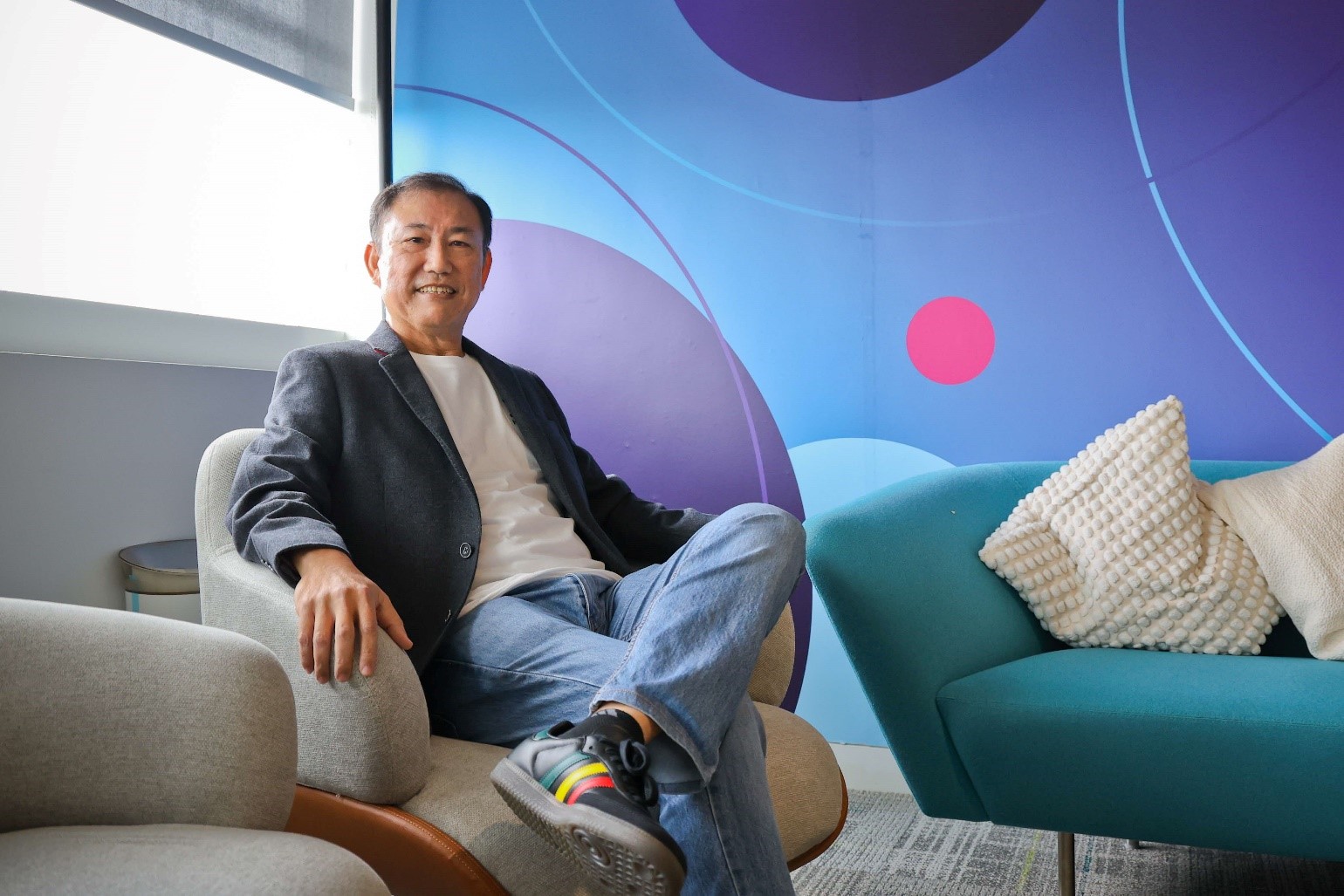 HTX Deputy Chief Executive (Operations) Chen Yeang Tat. (Photo: HTX/Alywin Chew)
HTX Deputy Chief Executive (Operations) Chen Yeang Tat. (Photo: HTX/Alywin Chew)
This personality profile is part of a series of stories about Xponents who have been with HTX since the very beginning. Their contributions have been pivotal to the growth of the agency, which was founded on 1 December 2019.
Most table tennis enthusiasts own a bat or two.
HTX Deputy Chief Executive (Operations) Chen Yeang Tat, however, owns a whopping five bats. He even has his own table and a ball dispensing machine that can replicate 11 different types of serves,
But this impressive collection of paraphernalia isn’t simply a sign of his passion for the sport – it also highlights his competitive streak and fixation with constantly improving himself.
This much can be seen in the fact that each of the five bats he owns has different characteristics. The first one he bought was a wooden penhold body fitted with two inverted rubbers, a conventional combination that works well for most casual enthusiasts. His second bat is similar, except that the body is made of carbon fibre, which suits those who prefer a pacier style of play.
The third, however, has a shakehand grip and comes with an inverted rubber and short pips, which is especially useful for countering serves with strong spins. Yeang Tat chose this combination to allow him to evolve his playing style.
“Fitting short pips was a tactical move I made because having it allowed me to adopt a style of play that is slower, which is more suited for someone of my age,” he quipped.
“The people from HTX’s table tennis Community of Interest whom I play with are at least 10 years younger than me. I can’t move as quickly as them. I can’t smash the ball as hard as them. I knew I needed to find a way to narrow the gap!”
Born driven
This inclination to always improve himself has been something Yeang Tat has possessed for most of his life.
One anecdote he shared related to this involved feeling embarrassed when he was not selected for his secondary school’s basketball school team because he was deemed too short. Following that incident, he started skipping every day in hopes that he would grow taller. He did eventually grow a few centimeters in height, but he laughingly conceded that this could have been due to puberty instead of his painstaking efforts.
“I would say I’ve always been very self-motivated. I love trying to improve myself and beating the odds,” he said.
Because of his self-motivation, Yeang Tat rarely faced any problems with his studies, though he admitted that he found theoretical lessons to be boring and would often daydream in class. This was why he opted to take technical studies - specifically the electronics stream - when he was in secondary school, citing how hands-on work was much more engaging.
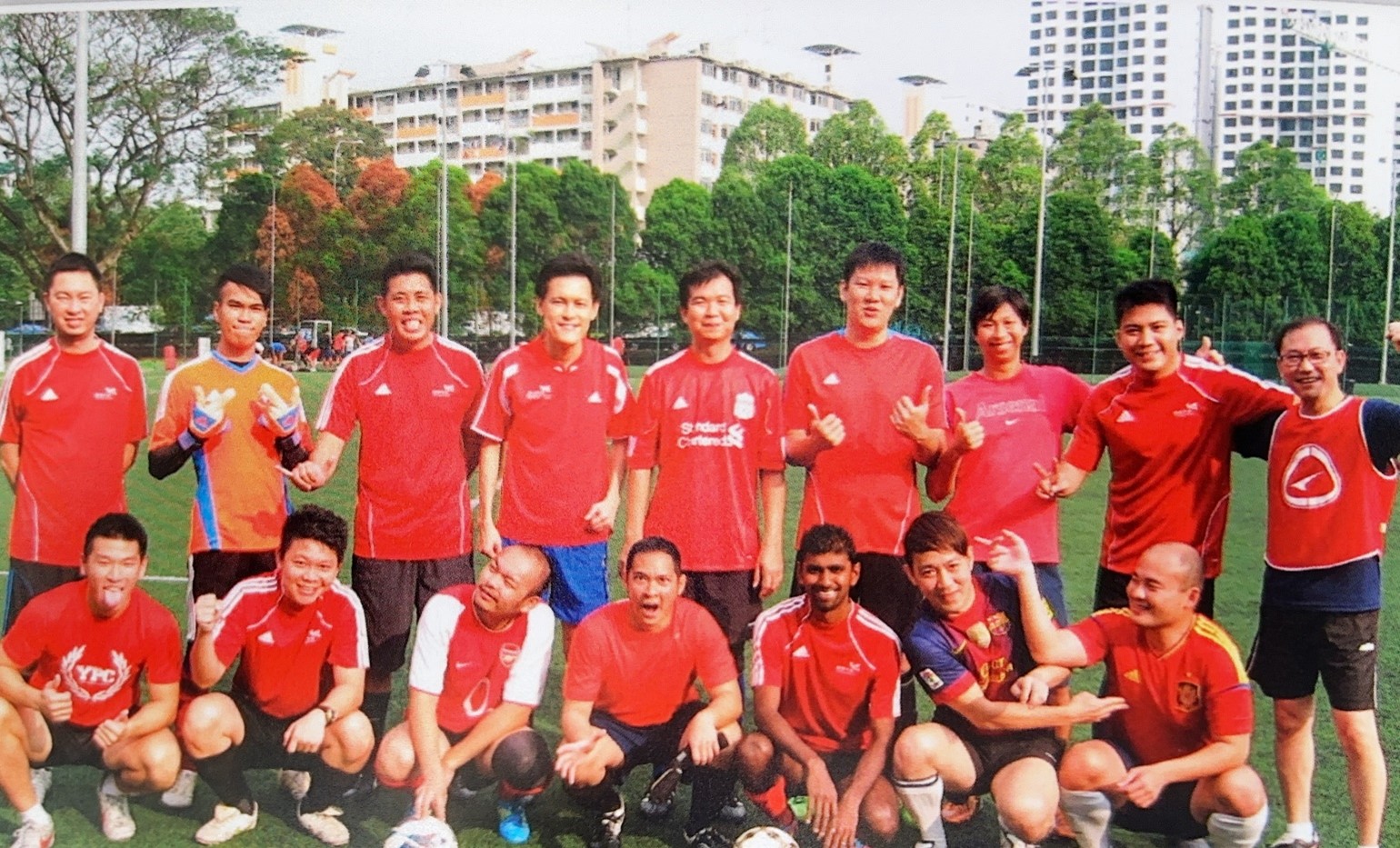 Yeang Tat (right) with his football kakis. (Photo: Chen Yeang Tat)
Yeang Tat (right) with his football kakis. (Photo: Chen Yeang Tat)
This was also the reason he chose to study electrical engineering in polytechnic. Another key factor behind this decision, he pointed out, was the fact that polytechnic students got to enjoy longer vacations compared to those in junior college. This was important because he wanted to work part-time and pay for his own school fees to alleviate the financial strain on his parents.
“I didn’t come from a well-to-do family. Whenever me and my siblings were free, we would help our parents with whatever odd jobs they took. Sometimes it was making plastic bags, sometimes it was helping to solder stuff,” he recalled.
One of the places he worked at during his vacation months was a semiconductor company, at which he loaded electronic chips onto integrated circuit boards. To maximise his earnings, he specifically chose the night shift as it paid the highest wages. But though he was paid an hourly wage instead of according to the number of integrated circuit boards he completed, Yeang Tat felt compelled to complete as many boards as he could.
His efforts didn’t go unnoticed. In fact, he was even singled out by the supervisor as a shining example the full-timers should emulate.
Things were no different after he enlisted for National Service, during which he became an infantry officer who was named Best Platoon Commander in his battalion.
The engineering route
Driven by his passion for engineering, Yeang Tat found himself a job as an engineering assistant at an electronics company just before he completed his National Service. But the move never materialised as his commanding officer, who was reluctant to see an outstanding talent leave the Singapore Armed Forces (SAF), intervened and persuaded the young man to join the military as a full-time combat officer.
Yeang Tat admitted that his head was indeed turned by the offer to become a full-time soldier as the salary would be a significant 40 percent higher than the job he had secured, as the private sector then was affected by a recession.
But he managed to find a solution that enabled him to get a higher salary while still chasing his passion in electronics – he would instead join the Republic of Singapore Navy (RSN), which was then in the midst of modernising its fleet with computerised command and control systems.
The go-getter didn’t take long to live up to his name. In the four years after joining the navy, Yeang Tat underwent a slew of training courses, including a stint in Sweden where he learned about state-of-the-art command control systems. After returning to Singapore and setting up a workshop for such systems, he was promptly rewarded with a promotion to the rank of captain. He was also offered a scholarship, which saw him undertake a Bachelor of Electrical Engineering at Nanyang Technological University (NTU).
Assuming leadership
Upon graduating from NTU, Yeang Tat returned to the RSN, where he helmed the electronics systems department within the very workshop he had set up. Over the next decade, he steadily worked his way up the ranks, eventually becoming the Head of Naval Engineering & Logistics. He also got to further his studies, courtesy of another scholarship, at the University of Michigan, where he obtained a Master of Science.
In 2009, Yeang Tat opted for a new challenge and took on the role of Deputy Director of Naval Systems Integration at the Defence Science and Technology Agency (DSTA). In this new role, he helped oversee project management efforts related to all kinds of vessels, including submarines, frigates and the new Endurance-class tank landing ships. His department was also responsible for handling projects related to precision missiles for the entire Singapore military.
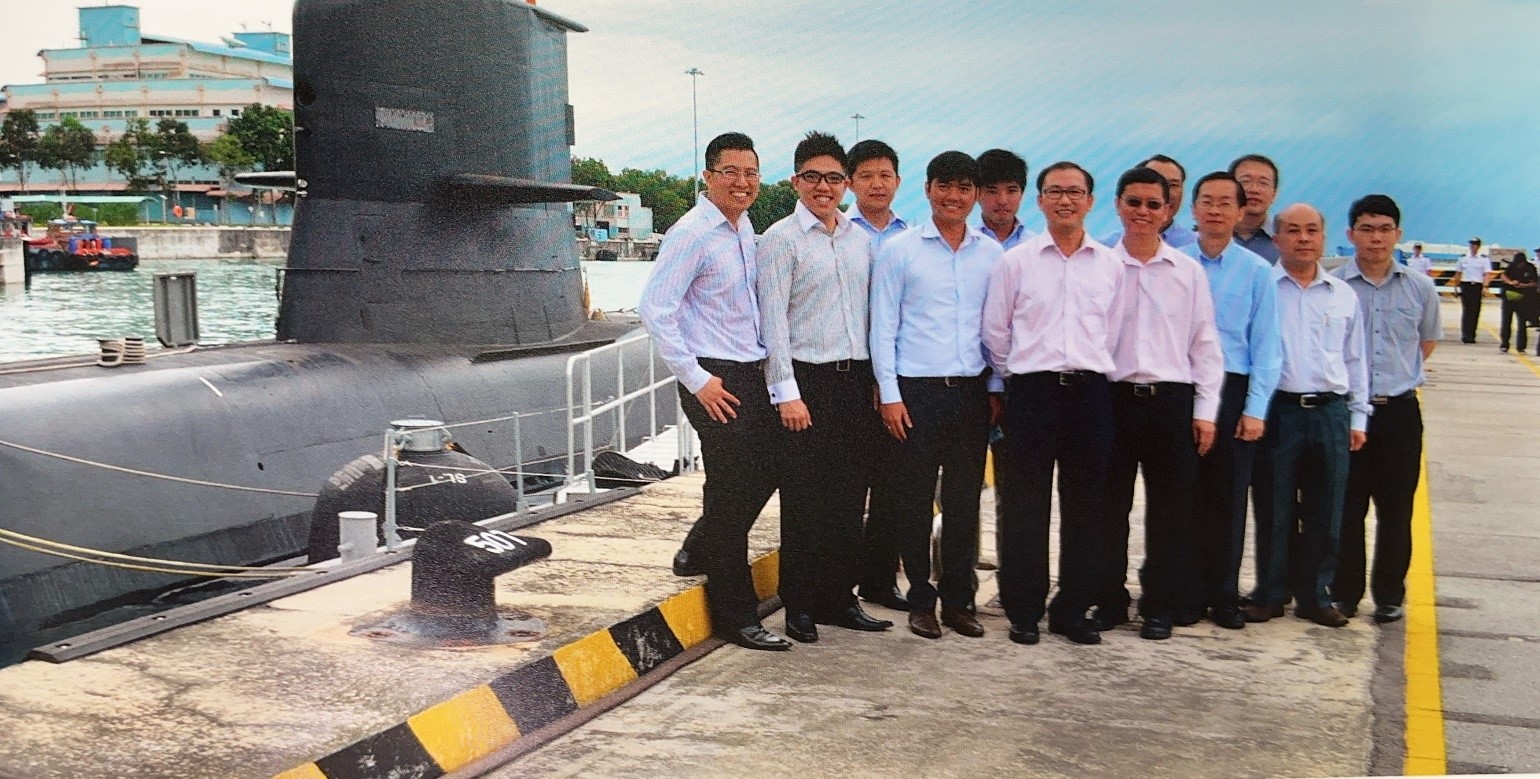 Yeang Tat (centre) and his colleagues from DSTA pose beside a RSN submarine. (Photo: Chen Yeang Tat)
Yeang Tat (centre) and his colleagues from DSTA pose beside a RSN submarine. (Photo: Chen Yeang Tat)
“This was one of the most exciting periods in my career. There was so much to do and so much to learn. And everything I did had an impact on the security of the nation,” he said.
In a nod to his abilities, Yeang Tat was in 2015 appointed the director of the Defence Industry & Systems Office, which governed agencies like DSTA and DSO National Laboratories. Three years later, he was approached by then Permanent Secretary (HAD) and former Chief of Navy Lai Chung Han himself to assume the role of a senior advisor for a major Ministry of Home Affairs (MHA) project related to the formation of a new public safety agency.
This agency eventually became known as HTX.
The prospect of making the move to MHA, he said, was somewhat unsettling even for someone of his ilk.
“I had spent my entire career in the military. I didn’t know anyone in MHA, except for the current HTX Deputy Chief Executive (Development) Ng Yeow Boon, whom I met a few times during joint meetings between the SAF and MHA. I also knew that MHA had a different culture and style of working. Naturally, I had reservations about accepting this secondment,” he said.
“It didn’t help that my superiors then warned me that such a move would not be a walk in the park!” he laughed.
Never one to turn down a challenge, Yeang Tat acceded to the request. It wasn’t too long after when Chan Tsan, the man who was chosen to helm HTX, approached Yeang Tat to ask if he was keen to take charge of the new agency’s Capability Sustainment operations.
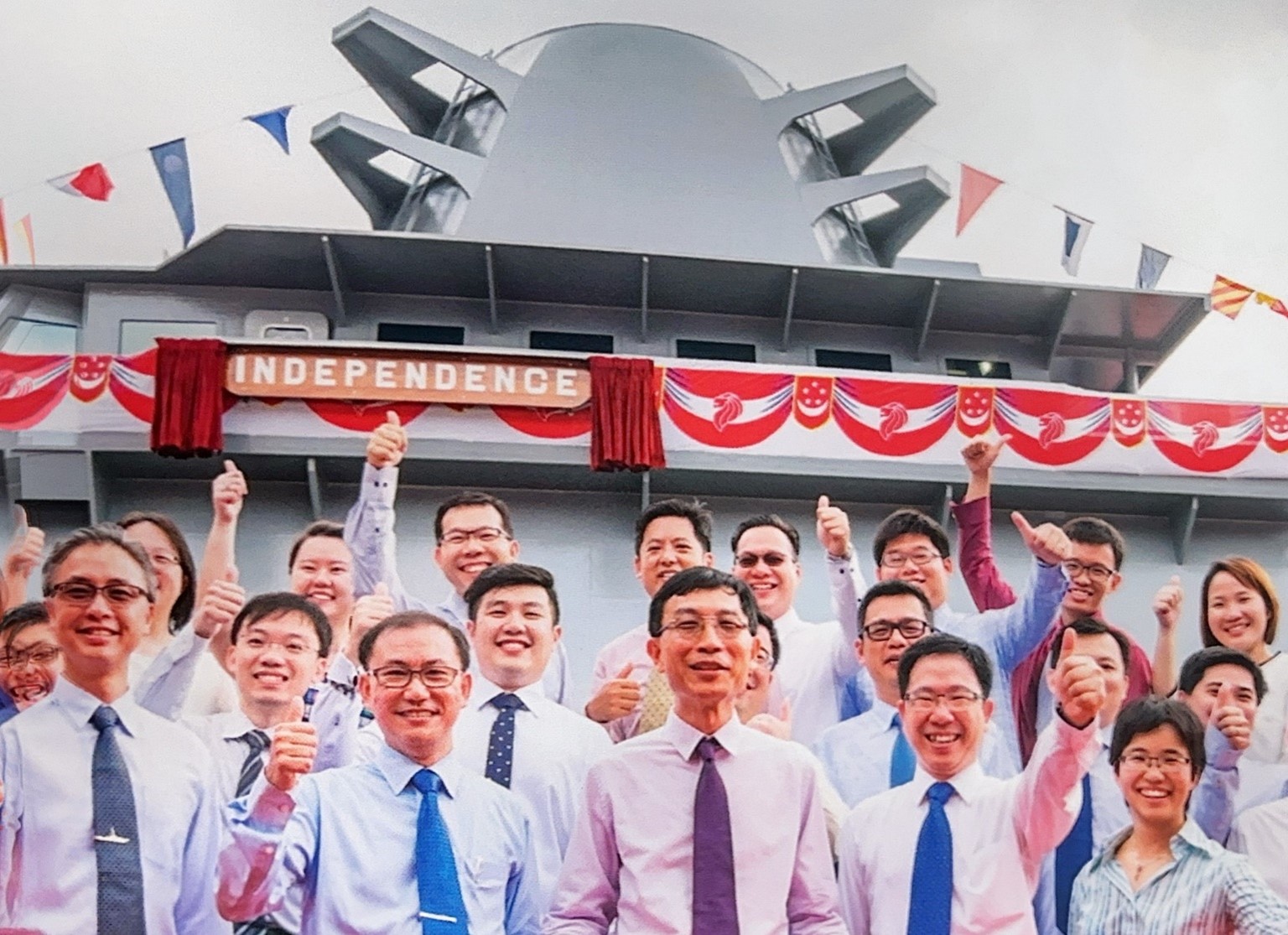 Yeang Tat (front row, second from left) handled systems integration efforts for all kinds of naval vessels, including the RSS Independence patrol craft pictured here. (Photo: Chen Yeang Tat)
Yeang Tat (front row, second from left) handled systems integration efforts for all kinds of naval vessels, including the RSS Independence patrol craft pictured here. (Photo: Chen Yeang Tat)
When asked why he decided to accept the role at HTX, Yeang Tat said: “I reckoned I could put myself at ‘risk’ and step into unknown waters. After all, this was going to be the last lap of my career. I wanted to do my best and end things on a high.”
But though he was now operating in territory he had little experience in, his new job at HTX was in some ways similar to his role at DSTA as both involved serving as a central point of contact for multiple stakeholders.
Except in this case, the stakes were higher, he noted.
“To be honest, it was daunting to be placed in charge of such a huge portfolio. This was not the case back in the SAF as each service branch would handle their own capability sustainment needs,” he explained.
“The weight of expectations was massive. We’re not just talking about managing the readiness of the Singapore Police Force or the Singapore Civil Defence Force – we’re talking about the entire Home Team.”
Seeing the big picture
The way Yeang Tat has gone about helming HTX’s capability sustainment endeavours is somewhat similar to his approach to table tennis - both are anchored on having a holistic view and prioritising efficiency.
“My experience in command and control systems has taught me that unless you have a comprehensive situational picture, you’ll always be fighting in the dark. This is why I always set a clear vision of what I want to achieve. I then experiment with different ways I can go about achieving that goal in the most efficient manner,” he said.
“In the context of table tennis, the big picture was me wanting to hold my own against the youngsters I play with. Yes, I can train long and hard to try and bridge the gap, but is that the most efficient way? I didn’t think so, not when I’m so much older. That was why I bought so many bats. I was trying to find the most efficient way to mitigate the disadvantages I had.”
In the context of capability sustainment, his vision of establishing a holistic view of the situation has resulted in the establishment of the Home Team Sustainment Centre (HTSC), a first-of-its-kind initiative that centralises the monitoring of readiness levels of Home Team assets under one roof.
Because of this new facility, which was launched in July 2024, something as seemingly innocuous as a malfunctioning lift in a building operated by a Home Team Department can be picked up by the HTSC, which would promptly dispatch the relevant personnel to rectify the problem.
 Yeang Tat (centre) with members of HTX’s Building and Infrastructure Sustainment Centre. (Photo: HTX)
Yeang Tat (centre) with members of HTX’s Building and Infrastructure Sustainment Centre. (Photo: HTX)
But efficient maintenance and repair is just one benefit of the HTSC. Because the centre has a comprehensive situational overview of Home Team assets, it can quickly determine whether a particular system failure is an isolated incident or just one element in a much larger problem such as a cyber attack.
Never one to rest on his laurels, Yeang Tat has already envisioned how the HTSC can improve in the coming years. One way it would do so is by leveraging artificial intelligence to predict system faults even before they occur. But technology can only do so much in ensuring that the Home Team’s capability sustainment needs are met.
Humans, Yeang Tat noted, will always play a central figure.
“It is the people who will operate the machines. It is the people who will evoke changes that make things better. Technology is merely a tool,” he said.
This is why the man has set the goal of making sure that he leaves HTX’s capability sustainment efforts in the hands of the right people before he retires in the near future.
What kind of qualities will he demand of the future leaders of HTX’s capability sustainment family?
For starters, they must truly believe in the vision and purpose of the job.
“They must have the right value system. Their hearts must be in the right place. If they are all about advancing their own interests, the capability sustainment family is no place for them,” he said.
“In this role, you can do a thousand and one things right and not receive any recognition. But get one thing wrong and you’ve got to shoulder the blame. It’s an unglamorous, often thankless job, but it’s also absolutely critical to public safety. We need people who are willing to work behind the scenes for the greater good. We need selflessness.”
Despite being the obsessive planner he is, Yeang Tat concedes that he has yet to map out what exactly he will be doing after he retires. And this is all down to his dedication to his job.
“I can’t afford to take my eyes off my current responsibilities. I reckon I would have plenty of time to think about what I want to do after I hand over my job to my successor,” he quipped.
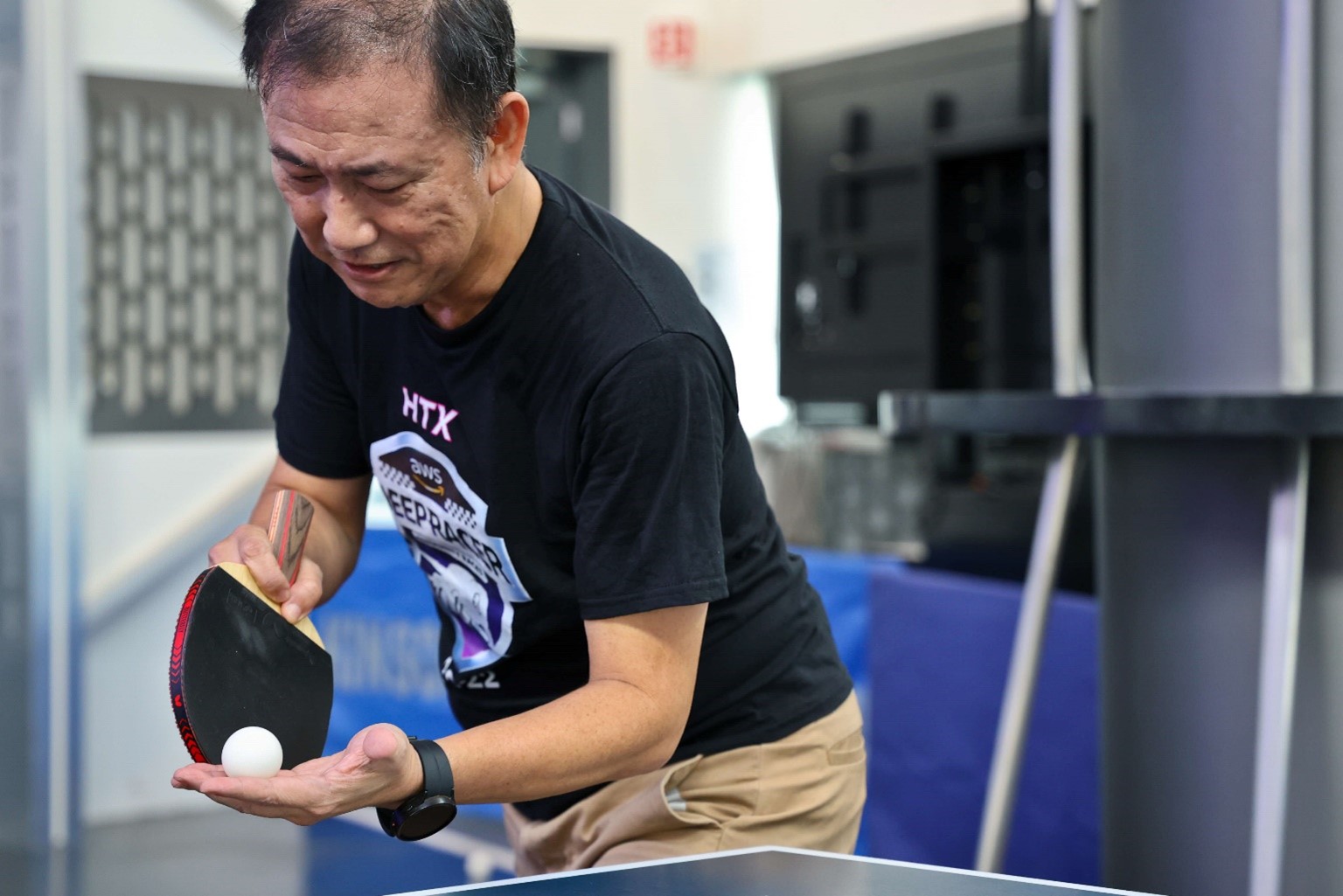 Yeang Tat preparing to serve during a training session with HTX’s Table Tennis Community of Interest. (Photo: HTX/Alywin Chew)
Yeang Tat preparing to serve during a training session with HTX’s Table Tennis Community of Interest. (Photo: HTX/Alywin Chew)
He does have a rough idea of what he would be doing, though - and it certainly doesn’t buck the trend of him always striving to improve himself.
On the cards would be learning more about cooking, gardening, funds management, digital skills, golfing and table tennis. He has also set his eyes on expanding his collection of sporting equipment.
“The next table tennis bat I’d likely buy would be a wooden shakehand with inverted rubbers to complement my current carbon-based shakehand. As for golf clubs, I can’t say I have any plans to buy more, but I can’t rule out doing so if there’s an irresistible sale!”
We are always seeking inquisitive and innovative individuals to co-create extraordinary solutions with us.
Join us to be at the forefront of the finest tech capabilities in the field! Join Us

